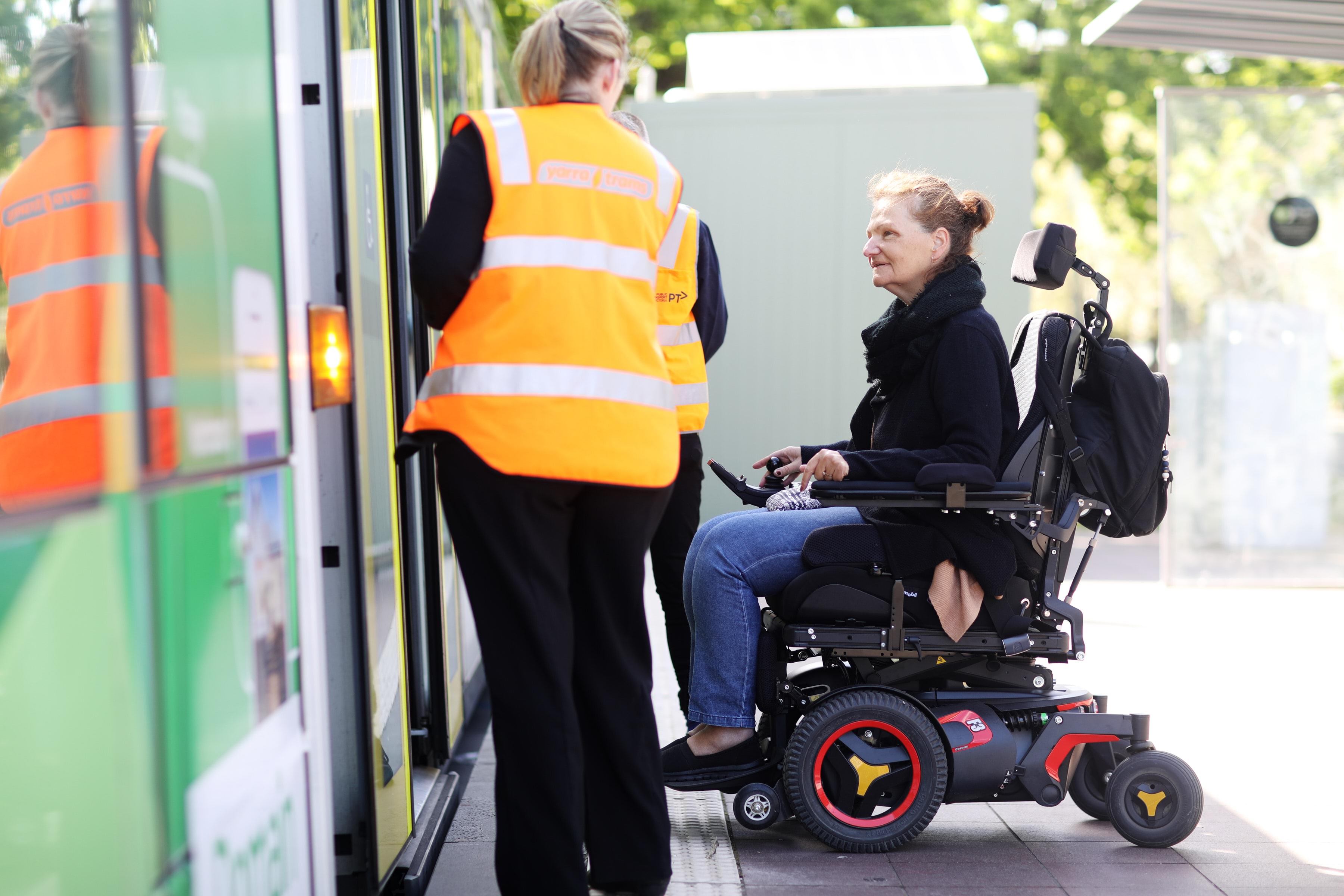Purpose
The Transport Accessibility Strategic Framework (the Strategic Framework) identifies the approach the Department of Transport and Planning (DTP) will take in addressing accessibility gaps and improving transport experiences for everyone, particularly people with disability, in line with universal accessibility goals.
The Strategic Framework was co-designed with people with disability and will inform Government on how to remove accessibility barriers to enhance the end-to-end travelling experience for everyone.
The Strategic Framework focuses on accessibility for everyone, including people with disability, older people, parents with young children, people travelling with luggage, and people who have suffered a temporary injury.
The Strategic Framework recognises that the challenges some people face in using transport can be increased when put together with their age, cultural background, or other differentiating factors. It is centred on how people’s travel experiences are impacted by accessibility.
Language and definitions used
The Strategic Framework uses person-first language to emphasise individuals beyond their disability, recognising diverse language preferences and committing to inclusive practices. This language puts the person before their disability, for example, ‘person with disability’.
Person-first language emphasises a person’s right to an identity beyond their disability as a way of addressing ableism. This approach is an important part of reflecting many people’s identities, particularly those with cognitive disability and self-advocates.
While we have chosen to use person-first language in the Strategic Framework, we recognise that person-first language may not be the preferred language of the whole community and that many people with disability prefer to use ‘identity-first’ language.
This approach puts a person’s disability identity before the person – for example, ‘disabled person.’ We recognise that identity-first language is important to many people with disability, including neurodiverse people and many in the Deaf community.
The Victorian Government has committed, through Inclusive Victoria: State Disability Plan 2022-26, to working with people with disability to understand community preferences and good practice in the language used to describe disability.
This Strategic Framework uses the United Nations Convention on the Rights of Persons with Disabilities definition of disability, which describes people with disability as people who have long-term physical, mental, intellectual or sensory differences that, when interacting with inaccessible communities and environments, prevent full and equal community participation.
This is often called the social model of disability. Under this approach, communities, services and spaces that are not accessible or inclusive cause disability.
The Strategic Framework accommodates both visible and non-visible disabilities and acknowledges that non-visible disabilities may also hinder a person’s full and equal community participation.
Recognising both visible and non-visible disabilities in the Strategic Framework is essential for fostering inclusion, promoting accessibility, and ensuring equal rights and opportunities for all individuals.
Intersectionality and diversity in disability
Acknowledging intersectionality and the diversity of disability is fundamental to understanding and responding to the multiple and compounding barriers people with disability and other diverse backgrounds experience when accessing or using public transport (Disabled People’s Organisations Australia, 2018).
Various challenges confront the Victorian transport network due to intersecting identities and diverse disabilities. These include inadequate infrastructure in rural and regional areas, language barriers for culturally diverse individuals, facilities inaccessible to LGBTQIA+ travellers, and affordability issues for low-income households.
Additionally, accommodating people with both visible and non-visible disabilities, such as physical, sensory, cognitive, or mental health-related conditions, adds complexity. A targeted accessibility strategy that considers intersectionality and diversity is needed to effectively tackle these challenges.
Recognising the diverse experiences and needs of individuals across intersecting identities, including gender, race, ability, sexuality, age, Aboriginality, cultural background, class, or immigration status, is essential.
Consultation with diverse communities, implementation of targeted support programs, infrastructure and facility improvements, accessible information and communication, and staff training are all vital for creating a more inclusive and welcoming transport environment for all Victorians.
Updated
